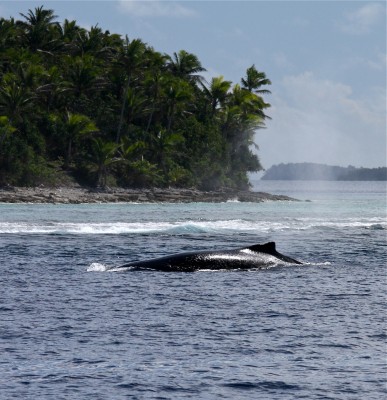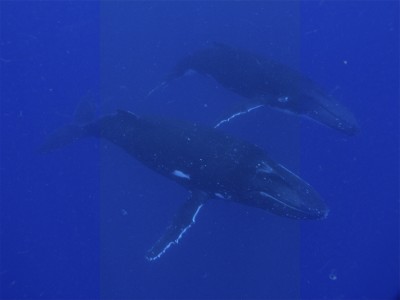- Welcome to Conscious Breath Adventures
Humpback Whales of Tonga - Swim with whales, Silver Bank Dominican Republic | Conscious Breath Adventures
- Home
- Humpback Whales
- Humpback Whales of Tonga
The tiny Kingdom of Tonga, 176 islands and 100,000 people, in the clear blue, coral seas of the south Pacific is one of only two locations in the world where swimming with humpback whales is officially permitted. Whales in the southern hemisphere feed in the rich waters around Antarctica and travel north as days get shorter to mate and breed in tropical seas. Humpbacks arrive in July and congregate in the sanctuary of islands around the Vava’u group. A whaling nation until 1979, these annual visits are so important to Tonga that whales are now mentioned in 80% of tourism promotions. Studies estimate that a single humpback returning every year could generate US $1 million in whale-watching revenue over the course of its lifetime.

Populations here are still reeling from the intensity of commercial whaling, with most species at less than 20% of initial abundance, although much remains unknown. Now, many Pacific nations have designated whale sanctuaries and are committed to conservation efforts. Good understanding of population numbers and breeding and feeding locations is crucial, because if commercial whaling were ever to recommence, managers would set catch quotas based on known numbers. A moratorium on whaling has been in effect since 1986, but this year saw efforts to lift that ban. Thankfully the International Whaling Commission passed on the agreement, for now.
Scientists use molecular genetic techniques to understand different populations. Distinct groups exhibit remarkable faithfulness to breeding and feeding grounds. Recent work showed four not three breeding populations in Polynesia. The work is important because these smaller populations warrant much more protective management efforts. There are six recognized feeding grounds around Antarctica where whales spend their summers feasting on krill and fish in the rich polar waters.
In addition to undertaking the longest known migration of any mammal, humpback whales are famous for their haunting, melodic songs. Much like our dialects and accents, Tongan whale song has a different timbre to that of their North Atlantic cousins. We can only speculate that they’re even speaking the same language!
Physically the most striking difference between northern Atlantic and southern Pacific whales is the coloration of their long pectoral fins. Source of the humpback whale’s Latin name “big winged New Englander,” the ghostly white glow of the fins of north Atlantic whales is familiar to whale watchers from the Caribbean to New England. In contrast, the fins of Tongan whales are dark grey-black while their belly (ventral surface) has as much or even more white coloration. Southern whales can get bigger too; fattening up in the Southern Oceans to reach up to fifty tons in weight.

In Tonga as on the Silver Bank visitors are encouraged to learn as much as possible about these animals and treat the experience with due respect. An encounter with a humpback whale can change your life but should of course not be at the expense of changing the animals’.
Sources and Further Reading
Olavarria et al., Population structure of humpback whales and the origins of the eastern Polynesian breeding grounds, January 2007, Marine Ecology Progress Series, Vol 330.
Constantine et al. In Press. Photo-identification of humpback whales (Megaptera novaeangliae) in New Zealand waters and their migratory connections to breeding grounds of Oceania. Marine Mammal Science.
Garrigue, C. et al. 2002. Movements of humpback whales in Oceania, South Pacific. Journal of Cetacean Research and Management 4:255-260.
http://www.sciencedaily.com/releases/2009/10/091013201754.htm
Dawbin WH (1966) The seasonal migratory cycle of humpback whales. In: Norris KS (ed) Whales, dolphins, and porpoises. University of California Press, Berkeley and Los Angeles, p 145–171
New Zealand Department of Conservation, 2007, Whales in the South Pacific http://www.doc.govt.nz/upload/documents/conservation/native-animals/marine-mammals/whales-in-the-south-pacific.pdf
Orams, M.B., 2002, Humpback Whales in Tonga: An Economic Resource for Tourism Coastal Management, Volume 30, Number 4, 1 pp. 361-380(20)